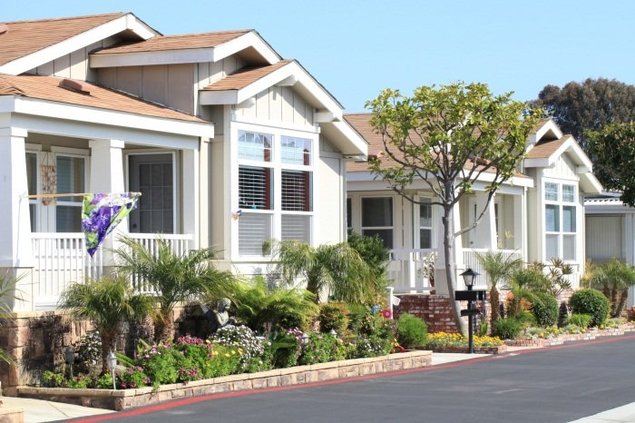San Joaquin County may allow manufactured home parks in agricultural-industrial and agricultural-urban reserve zones.
It is a potential solution advanced by the Board of Supervisors to help address the county’s growing affordable housing crisis.
That said, the county does not intend to allow such housing parks in general agricultural zones in order to prevent creating islands of housing in the middle of intense farming areas.
The two sub-categories of agricultural zoning where they would be allowed tend to be within two miles of established urban areas.
Draft zoning ordinance amendments to allow such housing developments are being reviewed by the San Joaquin County Planning Commission when they meet today at 6 p.m. at the county administration building in downtown Stockton.
The proposed changes would allow a maximum density of 10 manufactured/mobile homes per acre.
A typical city development of single family homes based on 1960s to 1980s development patterns, accommodates half that amount, or five units per acre.
The individual sites for manufactured homes must be a minimum of 2,500 square feet.
By contrast, lots in Manteca neighborhoods developed in the mid-1960s to mid-1990s were 5,000 to 6,000 square feet.
Manufactured home sites must have a minimum width of 40 feet and minimum service road frontage of 25 feet.
Minimum road widths within such parks will be:
*24 feet for roads on which parking is prohibited.
*32 feet for roads on which parking is allowed on one side.
*40 feet for roads on which parking is allowed on both sides.
The manufactured home parks are required to have internal walkways. Those walkways used by children as routes to school, school bus stops or other destinations must be located and safeguarded to minimize contact with automobile traffic.
The parks shall have one parking space per site.
Guest parking with have a minimum of one space for every two units and be within 350 feet of manufactured homes.
Masonry walls are not being required. Instead, six-foot high fencing with screening is allowed.
The perimeter of parks along roadways will require a 10-foot wide landscape strip.
At the same time any area within the project not used for housing, recreational space, parking and such will be landscaped.
Required recreation and open space is 5,000 square feet with 100 additional square feet for each unit beyond 50.
Besides the fencing with screening, there will be a 100-foot buffer required between a park’s property boundary and all rear and interior site property lines to distance residents from pesticide and fertilizer exposure and odor as well as farming noise.
It’s been 65 years since the last “mobile home park” has been built in San Joaquin County.
Supervisor Tom Patti — who represents Lathrop, Manteca north of Yosemite Avenue, the Delta region, and parts of northwest Stockon — believes manufactured housing parks could be a game changer.
It could mean affordable housing for working families that don’t have household incomes in six figures who are being priced out of new housing within San Joaquin County.
New homes sold in Manteca on average cost more than $700,000
In places such as River Islands and Mountain House — the latter that was envisioned in 2003 when it broke ground as an affordable housing community — the average new home is pushing $900,000.
And while they are still known in planning vernacular as “mobile home parks”, what supervisors are paving the way for are in reality manufactured housing parks.
The homes aren’t your great grandfather’s single or double wide trailers.
Nor are they your grandfather’s basic “box” modular homes built in sections in a factory.
Modern manufactured homes that are stick-built in factories today are often designed with modern architectural nuances that resemble those built on lots.
Comparison data places the actual cost savings per housing structure at between 10 and 20 percent less for manufactured as opposed to traditional stick-built homes on sites.
The manufactured homes average from 1,200 to 1,400 square feet.
The parks they are located in have a much higher density than standard neighborhoods.
As such, between two to three times the housing units can be placed on an acre.
That in turn reduces the infrastructure and land costs.
Such mobile home parks that are basically manufactured homes have been effective in making a dent in Southern California at-market housing making them within the financial reach of more people.
The negative connotation that mobile homes have that are based on older examples is often a high hurdle to clear in terms of overall perceptions.
To contact Dennis Wyatt, email dwyatt@mantecabuleltin.com





